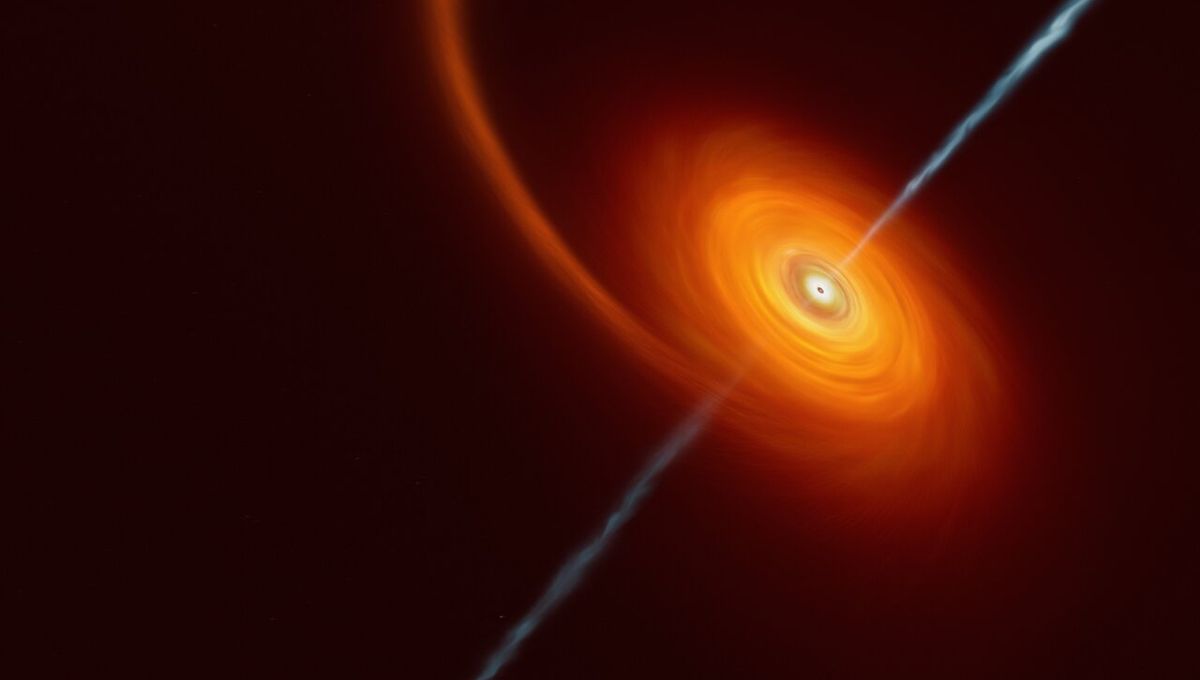
Astronomers have discovered the farthest-ever tidal disruption event (TDE). A Sun-like star was ripped apart by the tidal forces of a supermassive black hole. This dramatic event was also the brightest ever TDE seen so far, by a fair bit. Its light came to us from 8.5 billion light-years away. Thanks to a chance alignment, the jet that formed following this tidal disruption event was pointing straight at Earth.
The event released a gamma-ray burst of extreme energy. There have only been a handful of candidates of these jetted-TDEs observed and this one is by far the brightest.
“It is a record-breaking source, so it is important for both what we observed and how we observed it,” lead author of the paper, Dr Igor Andreoni, told IFLScience. “What we discovered is a star that is probably similar to the Sun that was pulled apart by the tidal forces of a supermassive black hole to which it got just a little bit too close.”
The event was first detected by the Zwicky Transient Facility and given the name AT2022cmc. It was followed up by 21 telescopes across many wavelengths from gamma rays to radio waves. It was the first jetted-TDE to be discovered with an optical telescope.
The optical observation shows that the object is consistent with the bright end of know gamma-ray bursts, but in radio and submillimeter observations this is one of the brightest events ever observed. And that’s not all. In X-rays, the event was extraordinary.
“Things looked pretty normal the first three days,” the lead author of a second paper, Dr Dheeraj “DJ” Pasham from MIT, said in a statement. “Then we looked at it with an X-ray telescope, and what we found was, the source was 100 times more powerful than the most powerful gamma-ray burst afterglow.”
The team confirmed that jetted-TDEs are very rare, maybe one in 100 disruptions have a jet, though why is not exactly clear. Researchers hope to build a unified theory of tidal disruption events, their environments, the original stars, and the properties of the black holes that destroyed those stars.
“We truly don’t understand well enough the astrophysics around supermassive black holes and the role of spin of the black hole for example,” Dr Andreoni told IFLScience. “In our paper, we suggest that the spin could play an important role in the formation of the jet.”
The paper led by Dr Andreoni is published in Nature. The one led by Dr Pasham is published in Nature Astronomy.
Source Link: Super Rare Black Hole Event Sees Incredibly Bright Jet Shooting Right At Earth